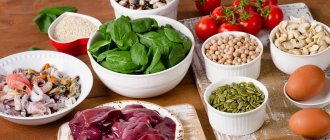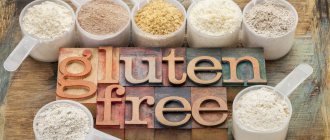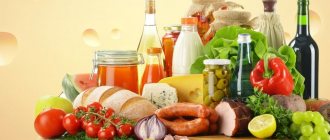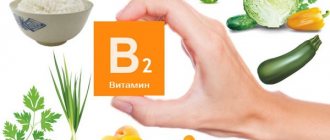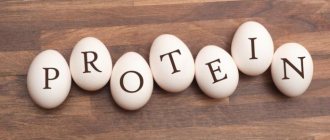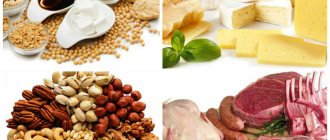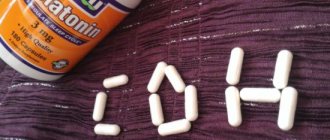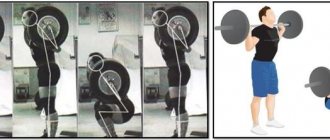Hello dear readers. Iron is one of the metals most abundant in the earth's crust. It has been used by man to make various materials since the times of Ancient Egypt. But, iron is necessary not only for the manufacture of weapons and household items, but also for the health of our body. The article answers the questions: “Why does our body need iron?” and “How to compensate for iron deficiency?” Indeed, with its deficiency, the functioning of the body can change significantly. And this usually happens for the worse. Iron is a biologically important element in a living organism, the role of which is extremely difficult to overestimate.
On my blog I have an article, or rather my story, about how I managed to increase hemoglobin in the blood with food, without the use of drugs.
What is iron and its role in the body
Iron is involved in a number of important processes in our body, which are global in the understanding of a closed biological system (which is our body).
1. A necessary element for the formation of hemoglobin. It is iron that reacts with oxygen, and thus supplies it to the cells of our body. And hemoglobin is also responsible for the removal of carbon dioxide. It is this chemical element that gives our blood its red color.
2. Responsible for the formation of myoglobin, which allows our body to store oxygen. Therefore we can hold our breath for a while.
3. Responsible for neutralizing toxic substances in the liver.
4. Responsible for immunity. This chemical element ensures the activity of interferon, which is released if our cells are affected by a virus.
5. The thyroid gland synthesizes hormones, and this process requires iron.
6. Without iron, B vitamins will not be absorbed. And the health of our body, including the beauty of the skin, hair, and nail plates, depends on the supply of vitamins of this group.
7. Fe is also essential for children, as it normalizes growth.
8. Without iron, protein metabolism is impossible; the element is also involved in DNA synthesis.
Thus, one chemical element is involved in a host of important biochemical processes in the body.
Therefore, iron deficiency is considered a disease that should be treated. And also it is the lack of oxygen that is considered to be the cause of cancer formation.
Therefore, normal iron content is an important condition for good health. It is important for everyone to know the symptoms of deficiency of this substance.
Biological functions of iron
Despite the body's high need for iron, it cannot synthesize the microelement itself. Iron is not found in its pure form in the body. After entering the substance with food, most of it binds to proteins. In its pure form, the trace element is toxic to living organisms. A small part is deposited in the form of a complex protein compound - ferritin. In this form, the microelement is deposited by the human body, and when it is deficient, it begins to be consumed.
80% of the absorbed iron is spent on building hemoglobin, which is the main structural unit of red blood cells. The biological function of iron in hemoglobin is the attachment of oxygen and carbon dioxide molecules. Cells and tissues are then supplied with oxygen, and carbon dioxide is returned back to the alveoli of the lungs.
Iron acquires the ability to transport oxygen and carbon dioxide exclusively as part of hemoglobin. Other proteins containing this microelement are not capable of performing a similar function.
10% of the trace element is included in the structure of myoglobin. It binds molecular oxygen and deposits it in the muscles. With a sharp deficiency of oxygen, it begins to be consumed from the protein myoglobin. This allows you to launch compensatory processes and maintain the body normal for some time during intense physical activity.
A trace element is necessary for the proper functioning of enzymes involved in the synthesis of nucleic acids. Without a sufficient amount of it, oxidative reactions, as well as energy and lipid metabolism, do not occur. The substance is of particular importance for pregnant women. It is necessary for the full formation of the fetus.
Based on the high degree of importance of the biological significance of iron in the body, its deficiency in the faucet has a negative impact on human health.
Main symptoms of iron deficiency
Anemia is a condition when the concentration of hemoglobin and red blood cells in the blood is below normal. In medical terms, the disease is called Anemia. And one of the causes of this disease is iron deficiency.
Deficiency can occur for several reasons:
✔ Wrong diet.
✔ Intensive growth of the body.
✔ Pregnancy and lactation period.
✔ Extensive blood loss.
✔ Parasites and others.
Therefore, to understand whether you have iron deficiency, you need to know the main signs of such a condition. After all, low hemoglobin is very dangerous.
Of course, only a physician can make an accurate diagnosis based on tests, and not all symptoms may appear.
However, their presence is an alarm bell that should prompt you to think about your health.
Symptoms of iron deficiency
1. Change in skin color. The skin becomes pale.
2. Increased fatigue.
3. The appearance of shortness of breath that is atypical for you during periods of moderate physical activity.
4. Rapid heartbeat without an objective reason.
5. Reduced temperature of the feet and palms.
6. Brittle nails.
7. Frequent headaches.
8. Plaque formation on the tongue.
9. Fainting and hypotension.
10. Strange taste preferences are likely, for example, raw spaghetti and meat have become very appetizing to you.
Symptoms may not be immediately obvious once the body experiences a deficiency. But, if this condition continues, the symptoms will gradually appear.
Prevention of iron deficiency anemia
The most accessible and effective method of combating iron deficiency is to eat foods containing iron. These products are:
- fruits;
- vegetables;
- whole grain bread;
- skimmed milk;
- low-fat cheeses;
- lean meat;
- fish;
- legumes;
- eggs;
- nuts;
- salt and sugar in small quantities.
Vitamin C helps well in the absorption of iron-containing foods. That is, if you eat foods containing iron and vitamin C at one time (for example: nuts + oranges), the absorption of iron will be twice as high as if these foods were eaten at different times days.
Recommendations for mothers with small children:
Young mothers often do not know what iron is needed for their babies - but it is found in mother's milk. Therefore, it is extremely important to breastfeed your baby for up to a year.
From the age of six months, introduce a product containing iron into the baby’s diet, that is, meat puree. Boil a fresh piece of veal and chop in a blender. One or two doses per day will be enough.
From the age of six months, in order to increase the benefit of the iron the baby receives from meat, introduce fruits rich in vitamin C into the baby’s diet.
If the child is bottle-fed, use a milk formula enriched with iron formula.
How much iron does the body need per day?
To calculate the norm, we will assume that our body absorbs only 10% of all products.
The daily value for adult men is 10 milligrams.
The norm for a teenage boy is 11 milligrams.
For adult women – 18 milligrams.
During pregnancy and lactation – from 20 to 30 milligrams.
Teenage girl - about 14 milligrams.
Ladies over 50 years old - about 12 milligrams.
Children under 3 years of age – about 6-7 milligrams.
Children from 3 to 11 years old - 10 milligrams.
Children under 14 years old - 12 milligrams.
Keep in mind that the need is individual and depends on the level of physical activity. If you follow a diet that excludes the consumption of meat, fish and poultry, then the norm increases by an average of 1.8. This is due to the lower degree of absorption of non-animal iron.
You've probably come across many tables that list iron content. But when calculating your diet, allowance should be made for the fact that not all iron is absorbed.
Therefore, an approximate diet for normal daily iron intake will be given under the following heading.
Foods and elements that enhance and weaken iron absorption
(iron rich foods)
(see full list of products)
| Oatmeal | 3.9 mg | 28% |
| Wheat flour 2 grades | 3.9 mg | 28% |
| Pistachios | 3.9 mg | 28% |
| Cashew | 3.8 mg | 27% |
| Oat flour | 3.6 mg | 26% |
| Oat flakes "Hercules" | 3.6 mg | 26% |
| Peeled rye flour | 3.5 mg | 25% |
| Spinach (greens) | 3.5 mg | 25% |
| Meat (rabbit) | 3.3 mg | 24% |
| Basil (greens) | 3.2 mg | 23% |
| Fresh figs | 3.2 mg | 23% |
| Dried apricots | 3.2 mg | 23% |
| Mussels | 3.2 mg | 23% |
| Dried apricots | 3.2 mg | 23% |
| Sunflower halva | 3.2 mg | 23% |
| Quail egg | 3.2 mg | 23% |
| Dandelion leaves (greens) | 3.1 mg | 22% |
| Quince | 3 mg | 21% |
| Raisin | 3 mg | 21% |
| Chocolate candies | 3 mg | 21% |
| Oat flour (oatmeal) | 3 mg | 21% |
| Dried peach | 3 mg | 21% |
| Prunes | 3 mg | 21% |
| Seeded rye flour | 2.9 mg | 21% |
| Table salt | 2.9 mg | 21% |
| Camelina mushroom | 2.7 mg | 19% |
| Corn grits | 2.7 mg | 19% |
| Millet groats (polished) | 2.7 mg | 19% |
| Corn flour | 2.7 mg | 19% |
| Meat (beef) | 2.7 mg | 19% |
| Chickpeas | 2.6 mg | 19% |
| Pasta made from 1st grade flour | 2.5 mg | 18% |
| Persimmon | 2.5 mg | 18% |
| Chicken egg | 2.5 mg | 18% |
| Black granular caviar | 2.4 mg | 17% |
| Pear | 2.3 mg | 16% |
| Apples | 2.2 mg | 16% |
| Wheat flour 1st grade | 2.1 mg | 15% |
| Sugar cookies | 2.1 mg | 15% |
| Rice (grain) | 2.1 mg | 15% |
| Walnut | 2 mg | 14% |
| Meat (lamb) | 2 mg | 14% |
| Red rowan | 2 mg | 14% |
| Horseradish (root) | 2 mg | 14% |
| Sorrel (greens) | 2 mg | 14% |
| The product's name | Iron content per 100g | Percentage of daily requirement |
| Peanut | 5 mg | 36% |
| Walnut | 2 mg | 14% |
| Dried acorns | 1 mg | 7% |
| Pine nut | 5.5 mg | 39% |
| Cashew | 3.8 mg | 27% |
| Sesame | 16 mg | 114% |
| Almond | 4.2 mg | 30% |
| Sunflower seeds (seeds) | 6.1 mg | 44% |
| Pistachios | 3.9 mg | 28% |
| Hazelnut | 4.7 mg | 34% |
| The product's name | Iron content per 100g | Percentage of daily requirement |
| Peas (shelled) | 7 mg | 50% |
| Green peas (fresh) | 0.7 mg | 5% |
| Buckwheat (grain) | 8.3 mg | 59% |
| Buckwheat (prodel) | 4.9 mg | 35% |
| Buckwheat (kernel) | 6.7 mg | 48% |
| Corn grits | 2.7 mg | 19% |
| Semolina | 1 mg | 7% |
| Oatmeal | 3.9 mg | 28% |
| Pearl barley | 1.8 mg | 13% |
| Wheat groats | 4.7 mg | 34% |
| Millet groats (polished) | 2.7 mg | 19% |
| Rice groats | 1 mg | 7% |
| Barley groats | 1.8 mg | 13% |
| Sweet corn | 0.5 mg | 4% |
| Pasta made from 1st grade flour | 2.5 mg | 18% |
| Premium flour pasta | 1.6 mg | 11% |
| Mash | 6 mg | 43% |
| Buckwheat flour | 4.1 mg | 29% |
| Corn flour | 2.7 mg | 19% |
| Oat flour | 3.6 mg | 26% |
| Oat flour (oatmeal) | 3 mg | 21% |
| Wheat flour 1st grade | 2.1 mg | 15% |
| Wheat flour 2 grades | 3.9 mg | 28% |
| Premium wheat flour | 1.2 mg | 9% |
| Wheat flour | 4.7 mg | 34% |
| Peeled rye flour | 3.5 mg | 25% |
| Rye wallpaper flour | 4.1 mg | 29% |
| Seeded rye flour | 2.9 mg | 21% |
| Rice flour | 1.3 mg | 9% |
| Chickpeas | 2.6 mg | 19% |
| Oats (grain) | 5.5 mg | 39% |
| Oat bran | 5.4 mg | 39% |
| Wheat bran | 14 mg | 100% |
| Wheat (grain, soft variety) | 5.4 mg | 39% |
| Wheat (grain, durum) | 5.3 mg | 38% |
| Rice (grain) | 2.1 mg | 15% |
| Rye (grain) | 5.4 mg | 39% |
| Soybean (grain) | 9.7 mg | 69% |
| Beans (grain) | 5.9 mg | 42% |
| Green beans) | 1.1 mg | 8% |
| Oat flakes "Hercules" | 3.6 mg | 26% |
| Lentils (grain) | 11.8 mg | 84% |
| Barley (grain) | 7.4 mg | 53% |
We invite you to familiarize yourself with the Kremlin diet - how to determine the weight of foods without scales
| The product's name | Iron content per 100g | Percentage of daily requirement |
| Vobla | 0.8 mg | 6% |
| Pink salmon | 0.6 mg | 4% |
| Red granular caviar | 1.8 mg | 13% |
| Pollock caviar | 1.5 mg | 11% |
| Black granular caviar | 2.4 mg | 17% |
| Squid | 1.1 mg | 8% |
| Flounder | 0.7 mg | 5% |
| Chum salmon | 0.6 mg | 4% |
| Baltic sprat | 1.4 mg | 10% |
| Caspian sprat | 1.4 mg | 10% |
| Shrimp | 1.8 mg | 13% |
| Bream | 0.3 mg | 2% |
| Atlantic salmon (salmon) | 0.8 mg | 6% |
| Mussels | 3.2 mg | 23% |
| Pollock | 0.8 mg | 6% |
| capelin | 0.4 mg | 3% |
| Meat (lamb) | 2 mg | 14% |
| Meat (beef) | 2.7 mg | 19% |
| Meat (turkey) | 1.4 mg | 10% |
| Meat (rabbit) | 3.3 mg | 24% |
| Meat (chicken) | 1.6 mg | 11% |
| Meat (fatty pork) | 1.4 mg | 10% |
| Meat (pork meat) | 1.7 mg | 12% |
| Meat (broiler chickens) | 1.3 mg | 9% |
| Navaga | 0.7 mg | 5% |
| Sea bass | 0.9 mg | 6% |
| River perch | 0.7 mg | 5% |
| Sturgeon | 0.7 mg | 5% |
| Halibut | 0.7 mg | 5% |
| Beef liver | 6.9 mg | 49% |
| Haddock | 0.7 mg | 5% |
| Beef kidneys | 6 mg | 43% |
| Crayfish | 1.8 mg | 13% |
| Carp | 0.6 mg | 4% |
| Salaka | 1 mg | 7% |
| Fatty herring | 1 mg | 7% |
| Lean herring | 1 mg | 7% |
| Medium salted herring | 1.1 mg | 8% |
| Mackerel | 1.7 mg | 12% |
| Som | 1 mg | 7% |
| Horse mackerel | 1.1 mg | 8% |
| Zander | 0.5 mg | 4% |
| Cod | 0.5 mg | 4% |
| Tuna | 1 mg | 7% |
| Acne | 0.4 mg | 3% |
| Oyster | 6.2 mg | 44% |
| Hake | 0.7 mg | 5% |
| Pike | 0.7 mg | 5% |
| The product's name | Iron content per 100g | Percentage of daily requirement |
| Chicken egg white | 0.2 mg | 1% |
| Chicken egg yolk | 6.7 mg | 48% |
| Egg powder | 8.9 mg | 64% |
| Chicken egg | 2.5 mg | 18% |
| Quail egg | 3.2 mg | 23% |
| The product's name | Iron content per 100g | Percentage of daily requirement |
| Cheese cheese (from cow's milk) | 0.7 mg | 5% |
| Curd mass 16.5% fat content | 0.4 mg | 3% |
| Condensed milk with sugar 5% | 0.2 mg | 1% |
| Condensed milk with sugar 8.5% | 0.2 mg | 1% |
| Low-fat condensed milk with sugar | 0.2 mg | 1% |
| Powdered milk 15% | 0.5 mg | 4% |
| Powdered milk 25% | 0.5 mg | 4% |
| Low-fat dry milk | 1 mg | 7% |
| Ice cream sundae | 0.2 mg | 1% |
| Cream 20% | 0.2 mg | 1% |
| Cream 25% | 0.2 mg | 1% |
| Cream 35% | 0.2 mg | 1% |
| Dry cream 42% | 0.6 mg | 4% |
| Sour cream 15% | 0.2 mg | 1% |
| Sour cream 20% | 0.2 mg | 1% |
| Sour cream 25% | 0.3 mg | 2% |
| Sour cream 30% | 0.3 mg | 2% |
| Cheese "Adygei" | 0.6 mg | 4% |
| Cheese "Dutch" 45% | 0.7 mg | 5% |
| Camembert cheese | 0.3 mg | 2% |
| Parmesan cheese | 0.82 mg | 6% |
| Cheese "Poshekhonsky" 45% | 1 mg | 7% |
| Cheese "Roquefort" 50% | 1 mg | 7% |
| Cheese "Russian" 50% | 1 mg | 7% |
| Sulguni cheese" | 0.6 mg | 4% |
| Chees Feta" | 0.65 mg | 5% |
| Cheddar cheese 50% | 1 mg | 7% |
| Swiss cheese 50% | 0.8 mg | 6% |
| Gouda cheese | 0.24 mg | 2% |
| Low-fat cheese | 0.3 mg | 2% |
| Processed cheese "Sausage" | 0.9 mg | 6% |
| Processed cheese "Russian" | 0.8 mg | 6% |
| Glazed cheese curds 27.7% fat | 1.5 mg | 11% |
| Cottage cheese 11% | 0.3 mg | 2% |
| Cottage cheese 18% (fat) | 0.5 mg | 4% |
| Cottage cheese 2% | 0.3 mg | 2% |
| Cottage cheese 4% | 0.4 mg | 3% |
| Cottage cheese 5% | 0.4 mg | 3% |
| Cottage cheese 9% (bold) | 0.4 mg | 3% |
| Low-fat cottage cheese | 0.3 mg | 2% |
| The product's name | Iron content per 100g | Percentage of daily requirement |
| Apricot | 0.7 mg | 5% |
| Avocado | 0.5 mg | 4% |
| Quince | 3 mg | 21% |
| Cherry plum | 1.9 mg | 14% |
| A pineapple | 0.3 mg | 2% |
| Orange | 0.3 mg | 2% |
| Watermelon | 1 mg | 7% |
| Basil (greens) | 3.2 mg | 23% |
| Eggplant | 0.4 mg | 3% |
| Banana | 0.6 mg | 4% |
| Cowberry | 0.4 mg | 3% |
| Swede | 1.5 mg | 11% |
| Grape | 0.6 mg | 4% |
| Cherry | 0.5 mg | 4% |
| Blueberry | 0.8 mg | 6% |
| Pomegranate | 1 mg | 7% |
| Grapefruit | 0.5 mg | 4% |
| Pear | 2.3 mg | 16% |
| Dried pear | 1.8 mg | 13% |
| Durian | 0.4 mg | 3% |
| Melon | 1 mg | 7% |
| Blackberry | 1 mg | 7% |
| Strawberries | 1.2 mg | 9% |
| Raisin | 3 mg | 21% |
| Ginger (root) | 0.6 mg | 4% |
| Fresh figs | 3.2 mg | 23% |
| Dried figs | 0.3 mg | 2% |
| Zucchini | 0.4 mg | 3% |
| White cabbage | 0.6 mg | 4% |
| Broccoli | 0.73 mg | 5% |
| Brussels sprouts | 1.3 mg | 9% |
| Kohlrabi cabbage | 0.6 mg | 4% |
| Red cabbage | 0.6 mg | 4% |
| Cabbage | 0.3 mg | 2% |
| Savoy cabbage | 0.4 mg | 3% |
| Cauliflower | 1.4 mg | 10% |
| Potato | 0.9 mg | 6% |
| Kiwi | 0.8 mg | 6% |
| Cilantro (greens) | 1.8 mg | 13% |
| Cranberry | 0.6 mg | 4% |
| Watercress (greens) | 1.3 mg | 9% |
| Gooseberry | 0.8 mg | 6% |
| Dried apricots | 3.2 mg | 23% |
| Lemon | 0.6 mg | 4% |
| Dandelion leaves (greens) | 3.1 mg | 22% |
| Green onion (feather) | 1 mg | 7% |
| Leek | 1 mg | 7% |
| Bulb onions | 0.8 mg | 6% |
| Raspberries | 1.2 mg | 9% |
| Mango | 0.2 mg | 1% |
| Carrot | 0.7 mg | 5% |
| Cloudberry | 0.7 mg | 5% |
| Sea kale | 16 mg | 114% |
| Nectarine | 0.28 mg | 2% |
| Sea buckthorn | 1.4 mg | 10% |
| Cucumber | 0.6 mg | 4% |
| Papaya | 0.25 mg | 2% |
| Fern | 1.3 mg | 9% |
| Parsnip (root) | 0.6 mg | 4% |
| Sweet pepper (Bulgarian) | 0.5 mg | 4% |
| Peach | 0.6 mg | 4% |
| Dried peach | 3 mg | 21% |
| Parsley (greens) | 1.9 mg | 14% |
| Parsley (root) | 0.7 mg | 5% |
| Pomodoro (tomato) | 0.9 mg | 6% |
| Rhubarb (greens) | 0.6 mg | 4% |
| Radish | 1 mg | 7% |
| Black radish | 1.2 mg | 9% |
| Turnip | 0.9 mg | 6% |
| Red rowan | 2 mg | 14% |
| Rowan chokeberry | 1.1 mg | 8% |
| Lettuce (greens) | 0.6 mg | 4% |
| Beet | 1.4 mg | 10% |
| Celery (greens) | 1.3 mg | 9% |
| Celery (root) | 0.5 mg | 4% |
| Plum | 0.5 mg | 4% |
| White currant | 0.5 mg | 4% |
| Red currants | 0.9 mg | 6% |
| Black currant | 1.3 mg | 9% |
| Asparagus (greens) | 0.9 mg | 6% |
| Jerusalem artichoke | 0.4 mg | 3% |
| Pumpkin | 0.4 mg | 3% |
| Dill (greens) | 1.6 mg | 11% |
| Dried apricots | 3.2 mg | 23% |
| Dates | 1.5 mg | 11% |
| Horseradish (root) | 2 mg | 14% |
| Persimmon | 2.5 mg | 18% |
| Cherries | 1.8 mg | 13% |
| Blueberry | 0.7 mg | 5% |
| Prunes | 3 mg | 21% |
| Garlic | 1.5 mg | 11% |
| Rose hip | 1.3 mg | 9% |
| Spinach (greens) | 3.5 mg | 25% |
| Sorrel (greens) | 2 mg | 14% |
| Apples | 2.2 mg | 16% |
| Dried apples | 6 mg | 43% |
| The product's name | Iron content per 100g | Percentage of daily requirement |
| Oyster mushroom | 1.3 mg | 9% |
| Camelina mushroom | 2.7 mg | 19% |
| Morel mushroom | 12.2 mg | 87% |
| Porcini mushrooms | 0.5 mg | 4% |
| Dried white mushrooms | 4.1 mg | 29% |
| Chanterelles | 0.7 mg | 5% |
| Honey mushrooms | 0.8 mg | 6% |
| Boletus mushrooms | 0.3 mg | 2% |
| Boletus mushrooms | 0.3 mg | 2% |
| Russula mushrooms | 0.6 mg | 4% |
| Champignon mushrooms | 0.3 mg | 2% |
| Shiitake mushrooms | 0.4 mg | 3% |
Discussion on the forum (comments: 3)
Article added: 2016-01-29
The table shows only those foods that contain the highest amount of iron. The share of iron is given in grams per 100 grams of product.
| PLANT ORIGIN | ANIMAL ORIGIN | ||
| Dried porcini mushrooms | 35,0 | Pork liver | 19,0 |
| Syrup | 19,5 | Lungs | 10,0 |
| Brewer's yeast | 18,1 | Beef liver | 9,0 |
| Sea kale | 16,0 | Chicken liver | 8,5 |
| Pumpkin seeds | 14,0 | Egg yolk | 7,2 |
| Cocoa | 12,5 | Chicken heart | 6,2 |
| Lentils | 11,8 | Language | 5,0 |
| Sesame | 11,5 | Rabbit meat | 4,4 |
| Buckwheat | 8,3 | Hematogen | 4,0 |
| Peas | 7,0 | Quail eggs | 3,2 |
| Blueberry | 7,0 | Beef | 3,1 |
| Halva | 6,4 | Black caviar | 2,5 |
| Beans | 5,9 | Chicken | 2,1 |
| Beans | 5,5 | Pork | 2,0 |
| Fresh mushrooms | 5,2 | Mutton | 2,0 |
| Black currant | 5,2 | ||
| Dried apricots | 4,7 | ||
| Almond | 4,4 | ||
| Peaches | 4,1 | ||
| Rye bread | 3,9 | ||
| Raisin | 3,8 | ||
| Spinach | 3,5 | ||
| Walnut | 2,9 | ||
| Corn | 2,4 | ||
| Chocolate | 2,3 | ||
| Apples | 2,2 | ||
What foods contain iron and what is important to include in your diet are important questions, the answers to which can be found in special tables.
Products containing iron are shown in Table 1.
Table 1 - List of iron-containing products
| Product group name | The product's name | Iron content in mg per 100 g |
| Animal products | ||
| Meat and offal | beef meat product | 3,6 |
| veal meat product | 2,9 | |
| lamb meat product | 3,1 | |
| pork meat product (low fat content) | 1,8 | |
| chicken | 3,6-4 | |
| rabbit meat product | 4,4 | |
| brains (beef product) | 6 | |
| turkey | 1,4 | |
| lung | 10 | |
| common carp | 2,2 | |
| fried chicken | 0,7-0,8 | |
| pig liver | 20,2 | |
| chicken liver | 17,5 | |
| beef liver | 6,9 | |
| calf liver | 5,4-11 | |
| kidneys (beef) | 7 | |
| lard | 2,3 | |
| heart (beef) | 4,8 | |
| heart (pork) | 4,1 | |
| tongue part (beef) | 5 | |
| tongue part (pork) | 3,2 | |
| Fish products and seafood | shrimps | 1,7 |
| bivalve | 9,2 | |
| mussels | 6,7 | |
| sardines | 2,9 | |
| sardines (canned version) | 2,9 | |
| common carp | 2,2 | |
| tuna (canned version) | 1,4 | |
| Red caviar | 1,8 | |
| boiled shellfish | 25-30 | |
| burbot | 1,4 | |
| cod | 0,6 | |
| mackerel | 2,3 | |
| sea fish | 1,1 | |
| chum salmon caviar | 1,8 | |
| black caviar | 2,4 | |
| Eggs and dairy products | chicken eggs (yolk part) | 6,7 |
| chicken eggs (white part) | 0,2 | |
| quail eggs (yolk part) | 3,2 | |
| butter | 0,1 | |
| soy products | 3,8-4 | |
| curd products | 0,4 | |
| tofu | 2,7 | |
| cow milk | 0,05 | |
| Products of plant origin | ||
| Cereals and bakery products | buckwheat | 8 |
| oats | 4,3 | |
| oat flakes | 3,6 | |
| barley | 12 | |
| semolina | 1 | |
| cereal (corn) | 2,7 | |
| cereal (millet) | 2,7 | |
| rye | 2,6 | |
| pasta | 1,2 | |
| Rye bread | 2,0-2,7 | |
| White bread | 0,9-2,6 | |
| oatmeal | 5 | |
| lentils | 7 | |
| wheat germ | 8 | |
| bran (wheat) | 11,1 | |
| flour (wheat) | 3,3 | |
| Vegetables, greens and legumes (this group of products is the most optimal diet for pregnant women, and belongs to the lowest calorie group of products) | spinach | 3,3 |
| artichoke | 3,9 | |
| eggplant | 0,6 | |
| broccoli | 0,7 | |
| boiled broccoli | 1,0-1,2 | |
| zucchini | 0,4 | |
| salad | 0,5 | |
| beet | 1,7 | |
| celery | 1,3 | |
| chard | 3,1 | |
| carrot | 0,7-1,2 | |
| potato | 0,8 | |
| sea kale | 16 | |
| cauliflower | 1,4 | |
| Brussels sprouts | 1,3 | |
| Chinese cabbage | 1,3 | |
| Sweet pepper | 7 | |
| turnip (greens) | 1,1 | |
| corn | 2,7 | |
| pumpkin | 0,8 | |
| asparagus | 2,1 | |
| beans | 11-12,4 | |
| green beans | 5,9 | |
| white beans | 3,7 | |
| red beans | 2,9 | |
| fresh mushrooms | 5,2 | |
| dried mushrooms | 35 | |
| Jerusalem artichoke | 4 | |
| chickpeas | 2,9 | |
| beans | 5,5 | |
| lentils | 11,8 | |
| parsley | 5,8 | |
| parsley (root) | 1,8 | |
| tomatoes | 0,6 | |
| rhubarb | 0,6 | |
| peas | 8-9,4 | |
| Fruits and berries | apricots | 2,1-4,9 |
| plum splayed | 1,9 | |
| a pineapple | 0,3 | |
| citrus | 0,4 | |
| watermelon | 1 | |
| bananas | 0,7 | |
| cowberry | 0,4 | |
| strawberries | 1,2 | |
| grape | 0,6 | |
| cherry | 0,5 | |
| pomegranate | 0,78 | |
| pear | 2,3 | |
| melon | 1 | |
| plum | 2,1 | |
| persimmon | 2,5 | |
| apples | 0,5-2,2 | |
| peach | 4,1 | |
| lemon | 0,6 | |
| strawberry | 0,7 | |
| cranberry | 0,6 | |
| gooseberry | 1,6 | |
| dogwood | 4,1 | |
| raspberries | 1,6 | |
| mandarin | 0,4 | |
| rose hip | 11 | |
| cherries | 1,6 | |
| blueberry | 8 | |
| black currant | 2,1 | |
| Dried fruits | prunes | 3 |
| dried apricots | 12 | |
| dried apricots | 11,7 | |
| raisin | 3 | |
| figs | 0,4 | |
| pear | 13 | |
| Nuts and seeds | pistachios | 3,9 |
| cashew | 6,7 | |
| Pine nuts | 3 | |
| almond | 4,4 | |
| peanut | 4,6 | |
| hazelnut | 3,2 | |
| sunflower seeds | 6 | |
| pumpkin seeds | 15 | |
| walnuts | 2,9 | |
| Herbs and spices | ||
| Herbs and spices | thyme (thyme) dried | 123,6 |
| dried basil | 89,8 | |
| dried mint | 87,47 | |
| dried marjoram | 82,71 | |
| dried dill | 48,78 | |
| celery seeds | 44,9 | |
| laurel | 43 | |
| dried coriander (cilantro) | 42,46 | |
| ground turmeric | 41,42 | |
| ground savory | 37,88 | |
| oregano (oregano) dried | 36,8 | |
| dried tarragon (tarragon) | 32,3 | |
| ground sage | 28,12 | |
| dried parsley | 22,04 | |
| paprika | 21,14 | |
| ground ginger | 19,8 | |
| fennel seeds | 18,54 | |
| fresh thyme | 17,45 | |
| coriander seeds | 16,32 | |
| cumin seeds | 16,23 | |
| nutmeg husk | 13,9 | |
| fresh curly mint | 11,87 | |
| fresh dill | 6,59 | |
| fresh parsley | 6,2 | |
| fresh basil | 3,17 | |
| fresh coriander (cilantro) | 1,77 | |
| Seaweed | ||
| Seaweed | dried spirulina | 28,5 |
| dried agar | 21,4 | |
| Irish moss (carrageen) | 8,9 | |
| kelp (sea kale) | 2,85 | |
| spirulina raw | 2,79 | |
| wakame (Undaria pinnate) | 2,18 | |
| raw agar | 1,86 | |
| nori (porphyry) | 1,8 | |
| Other products | ||
| Others | cocoa | 12,2 |
| hematogen | 4 | |
| plum juice | 2,9 | |
| tomato juice | 1,8 | |
| syrup | 21,5 | |
| halva | 6,4 | |
| honey | 0,9 | |
| Brewer's yeast | 16-19 | |
| chocolate | 2-2,7 | |
We suggest you familiarize yourself with Nutrition in the absence of a gallbladder recipes
What promotes and interferes with iron absorption
Remember that the cause of iron deficiency may not be in the diet at all, and the deficiency itself may be a symptom of another disease.
Reduces iron absorption:
- High intestinal slagging, iron is absorbed by the upper intestine.
- A diet that is dominated by fatty foods and dairy products, since calcium reduces the absorption of iron and vice versa, so these products should not be combined.
- Tannin, which is found in tea and coffee.
- Prolonged heat treatment of food.
- Fitins, which are part of regular bread, as opposed to wholemeal bread.
- Diseases of the gastrointestinal tract.
Iron in food is well absorbed by our body if combined with such vitamins, microelements and products.
Increases iron absorption:
- Ascorbic acid.
- B vitamins.
- Cooking in cast iron cookware.
- Molybdenum, which is found in rice, tomatoes, parsley.
- Copper, which is rich in nuts and avocados.
- Cobalt is found in chicory and spinach.
- Zinc, so eat seafood, seeds, buckwheat and rye bread.
- Cinnamon.
- Thyme.
- Mint.
- Anise.
- Moderate consumption of pickles and sauerkraut along with iron-rich foods.
- Eating onions and garlic along with grains contains sulfur, which increases absorption.
Don't blindly chase high iron content. Everything needs balance, so any diet should be thought out.
Excess iron leads to poor absorption of Ca, Mg, Zn, which is also bad for the body. The diet should include both heme and non-heme iron.
Give preference to healthy and nutritious foods, lean meats, seafood, vegetables and fruits, as well as healthy grains.
Remember, in large doses of over 200 milligrams per day, iron is toxic, and a lethal dose is from 7 grams.
Products containing iron
What foods contain iron?
Healthy foods that contain sufficient amounts of iron are not uncommon, so they should be represented in our diet. These are products of both plant and animal origin. But it must be taken into account that the supply of iron contained in plant foods is only 3-5%, and 25-30% comes from food of animal origin.
The maximum amount of iron is found in foods such as liver and red meat, and there is much more of it in beef than in young veal. Rabbit and lamb meat are rich in this useful element, but pork and chicken contain very little of it.
The liver contains a lot of iron, but it is not recommended to include it in the daily diet, since toxins and harmful substances . But red meat should be present at least once in dishes consumed during the day.
You can learn all about the benefits of cranberries, rich in iron and potassium, from our article.
Read here about foods high in potassium, as well as signs of deficiency and excess of this trace element in the body.
Seafood will also . The first place in the amount of iron is occupied by shellfish, oysters, snails and cod liver.
Eggs, especially their yolk, will help increase iron levels in the body. But if you compare chicken and quail eggs, preference should be given to the latter.
Among all the variety of fruits, the largest amount of this unique element is in apples, especially in the Antonovka variety. Fruits such as peaches, bananas, persimmons and pomegranates are also good for replenishing iron deficiency.
